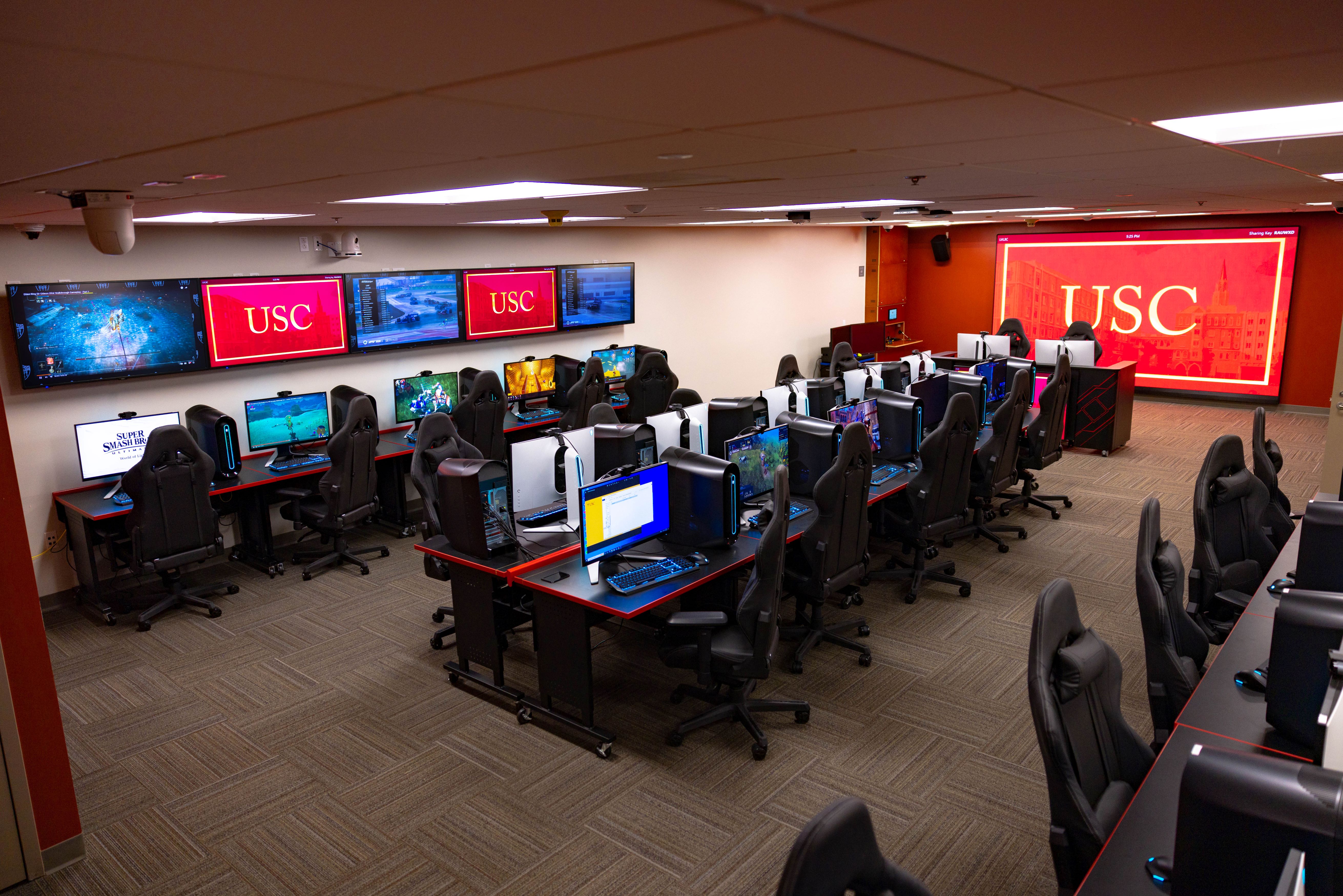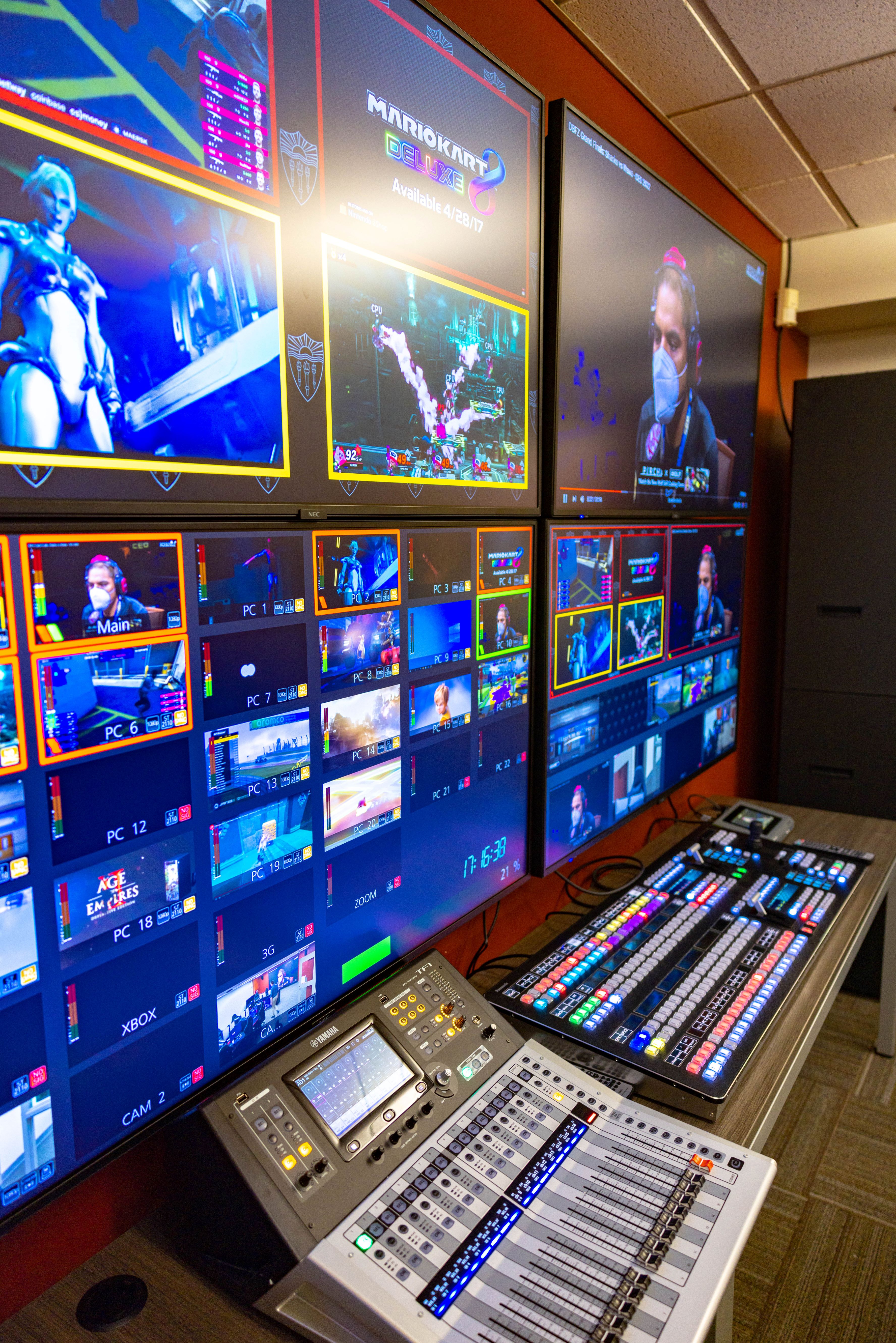
AV/IT TEAM: Joe Way, director, Learning Environments; Raj Singh, manager, AV Design and Engineering; Will DeWitt, manager, Learning Environments; Chi Hang Lo, AV/IT solutions architect; Hunter Stacey, project manager; Anton Zeiher, operations manager; Lex Evans, CX/UX designer; Marco Winfrey, End Points; Anthony Watson, senior AV engineer; John Donohue, programmer/AV engineer; Lorenzo Bernardi, senior support analyst; Adaline Tatum, faculty support analyst; Fernando Jauregui, support analyst
GOALS: The University of Southern California (USC) in Los Angeles wanted to create an accessible space to provide students and staff with commercial-grade, interactive multimedia technology that would unleash creative energy and enable them to evolve artistically.
This first-of-a-kind space would include an esports arena, computers for 3D modeling and digital creation, a professional broadcasting studio, media production suite, video studio, podcast studios, VR/AR/XR spaces, NFT art gallery, blockchain integration, hologram production, 3D printing, large-format printing, collaboration tables, a live-streaming classroom, a 24/7 helpdesk, laptop reservations, IT assistance, tech training resources, and group study rooms.
CHALLENGES: This project had two main challenges: (1) the physical space; and (2) ensuring all students were served equally. The USC Digital Creative Lab was created in the basement of the main 24/7 library. We sought to place the space in an environment where all students could take advantage of when and how it was convenient for them. The space required a network upgrade to have fiber run from every device encoder and ensure the power and HVAC could handle a large amount of technology, while simultaneously ensuring the space was aesthetically pleasing, open, and effective for collaborative work. Because the Digital Create Lab leverages the latest emerging technologies, the spaces needed to be built so that it could continually adapt to whatever mediums would be next. “Scope creep” was a challenge, because of how many different mediums each area touched; as we integrated one technology, there were two to three others that were related and needed to be integrated as well.

FINAL INSTALL/USER BENEFITS: The USC Digital Creative Lab is unlike anything seen on any campus in the world. This technology hub was initially conceived as an esports arena where the esports teams could practice and host tournaments, but it soon became the signature space for all things digital. At its heart is a 165-inch-diagonal direct-view LED video wall from Sharp NEC positioned at the front of the main room, serving as a focal point for the entire space. During tournaments, vivid, crystal-clear game play and highlights are displayed larger than life on the video wall. During school hours, the hybrid space is used as a classroom. It has 26 stations for students and professors with the luxury of using the video wall with their lectures.

Technology for the Digital Creative Lab was sourced from ARHT, Audinate, Biamp, BrightSign, Canon, Crestron, Dell, DTEN, Epiphan Video, ggCircuit, Huddly, Korbyt, Legrand, Listen Technologies, Makerbot, Microsoft, Nintendo, Panasonic, QSC, Peerless-AV, Riedel, Rode, Sharp NEC, Shure, Sony, and Yamaha.
Ancillary to the main space are several additional rooms, including a state-of-the-art video production room populated with technology that would be at home in any of the nearby Hollywood studios, including green screens, camera and sound equipment, and several 49- and 55-inch Ultra High Definition Professional NEC displays.
The special NFT Lounge is the first permanently installed NFT art gallery on a college campus. It features 11 displays from Sharp NEC including four 75-inch and seven 65-inch Ultra High Definition Professional Displays. These displays are used to present NFTs in perfect clarity. USC encourages students to go after their dreams, and the world-class technology the team has implemented allows them to make that a reality like nothing else.
This Digital Creative Lab also benefits users because it recognizes that the world has changed, students are now their own personal brand, and need a space to be able to develop their professional profile by collaborating with others and develop their craft. This space offers an opportunity for all students to leverage creative mediums for their major study, inviting them to collaborate across majors to build their portfolios. Likewise, because the space is in a 24/7 library, it is available for use by every student—not just specialized groups who study those majors. The Digital Creative Lab also doubles as a working live-streaming classroom and event space for individualized instruction, guest lectures, and group study.
When planning the Digital Creative Lab space, we knew we wanted to ensure everyone had the same opportunity to experience and use it like any other student."
—Joe Way
Another benefit to the campus community has been increased accessibility to cutting-edge technology. Joe Way, director of Learning Environments, said, “Accessibility is one of our core beliefs. We recognize, especially for our department, that we must serve the entire student body. One of the things that the pandemic exposed was that not every student gets served equally. What we recognized was that those who needed accommodations were often underserved. So, when planning the Digital Creative Lab space, we knew we wanted to ensure everyone had the same opportunity to experience and use it like any other student. Thus, we made accessibility and choosing Listen Technologies solutions a high priority.”
Way continued, “Everyone can use the Listen EVERYWHERE system—whether they need assistive listening or not. Seeing how many students and others take advantage of the streaming capabilities has been amazing. ADA-compliant assistive listening signage is installed at the entrances to promote the system. We’ve also partnered with the Office of Student Accessibility Services to ensure students know about the available technology.”
[ Check out more from The Class of 2023: The AV/IT Teams of Higher Ed ]







